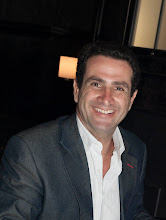(c. 1400-1455), Italian painter of the early Renaissance, who combined the life of a devout friar with that of an accomplished painter. He was originally called Guido di Pietro and was named Angelico (Italian "angelic") and Beato (Italian "blessed") because of the calm, religious subjects of his paintings and because of his extraordinary personal piety. Fra Angelico was born in Vicchio, Tuscany. He entered a Dominican monastery in Fiesole in 1418 and about 1425 became a friar, using the name Giovanni da Fiesole. His teacher is unknown, but he apparently began his career as an illuminator of missals and other religious books.
His earliest paintings were altarpieces and other panels; among his important early works are the Madonna of the Star (c. 1428-1433, San Marco, Florence) and Christ in Glory Surrounded by Saints and Angels (National Gallery, London), which depicts more than 250 distinct figures. Among other works of that period are two paintings of the Coronation of the Virgin (San Marco and Louvre, Paris) and a Deposition and Last Judgement (San Marco). His mature style is first seen in the Madonna of the Linen Weavers (1433, San Marco), which features a border with 12 music-making angels.
In Florence and Rome In 1436 the Dominicans of Fiesole moved to the monastery of San Marco in Florence, which had recently been rebuilt by Michelozzo. Fra Angelico, sometimes aided by assistants, painted many frescoes for the cloister, chapter house, and entrances to the 20 cells on the upper corridors. The most impressive of these are the Crucifixion, Christ as a Pilgrim, and Transfiguration. His altarpiece for San Marco (c. 1439) is one of the first representations of what is known as a Sacred Conversation: the Madonna flanked by angels and saints who seem to share a common space.
In 1445 Fra Angelico was summoned to Rome by Pope Eugenius IV to paint frescoes for the now-destroyed Chapel of the Sacrament in the Vatican. In 1447, with his pupil Benozzo Gozzoli, he painted frescoes for Orvieto Cathedral. His last important works, frescoes for the chapel of Pope Nicholas in the Vatican, are Scenes from the Lives of SS Stephen and Lawrence (1447-1449), probably painted from his designs by assistants. From 1449 to 1452 Fra Angelico was prior of his monastery in Fiesole. He died in the Dominican monastery in Rome on March 18, 1455.
Fra Angelico combined the influence of the elegantly decorative Gothic style of Gentile da Fabriano with the more realistic style of such major Renaissance artists as the painter Masaccio and the sculptors Donatello and Ghiberti, all of whom worked in Florence. Fra Angelico was also aware of the theories of perspective proposed by Leon Battista Alberti. Fra Angelico's rendering of devout facial expressions and his use of colour to heighten emotion are particularly effective. His skill in creating monumental figures, conveying a sense of motion, and suggesting depth through the use of linear perspective, especially in the Roman frescoes, mark him as one of the foremost painters of the Renaissance.
Book your Accommodation In Italy
Thursday, October 18, 2007
Fra Angelico
Posted by
Italian Food
at
7:13 AM
![]()
Labels: Artists, Florence, Fra Angelico, Renaissance
Subscribe to:
Post Comments (Atom)





No comments:
Post a Comment